When you are going to engage yourself in any play, you need to consider everything from beginning to end.
After knowing the rules of the game, our first focus will be the availability of playing areas or courts and the accomplishment of all the material associated with the game.
The unavailability of courts is problematic, so it’s good to know that you can also build your court, and the delighting fact is it can be constructed in your backyard.
With the ongoing passion for playing pickleball, the need to build a pickleball court is indispensable.
To fulfill the demand of courts, we have to know how to build a pickleball court? So, here we will discuss the construction of the court, its dimension, and all the basic demands that a pickleball court needs.
Continue reading to clear the concept regarding construction.
Pickleball Court Dimensions and Orientation
While orienting the court, the concept of dimensions should be cleared.
Whether you are building a court at a gym, school, club, or in your backyard, you need to know the size of the pickleball court needed to play.
So, here you go:
- The length required to construct a pickleball is 44 ft, while the width should be 20 ft.
- The pickleball net height should be 36 inches from the sides and 34 inches from the middle or center.
- The standard playing area required is 30/60 ft. When you are going to play a tournament, or you are building a court for tournaments you need a playing area of about 34/60 ft.
- The height of fencing should be 10 feet but 04 feet height may also utilize if the fence is padded.
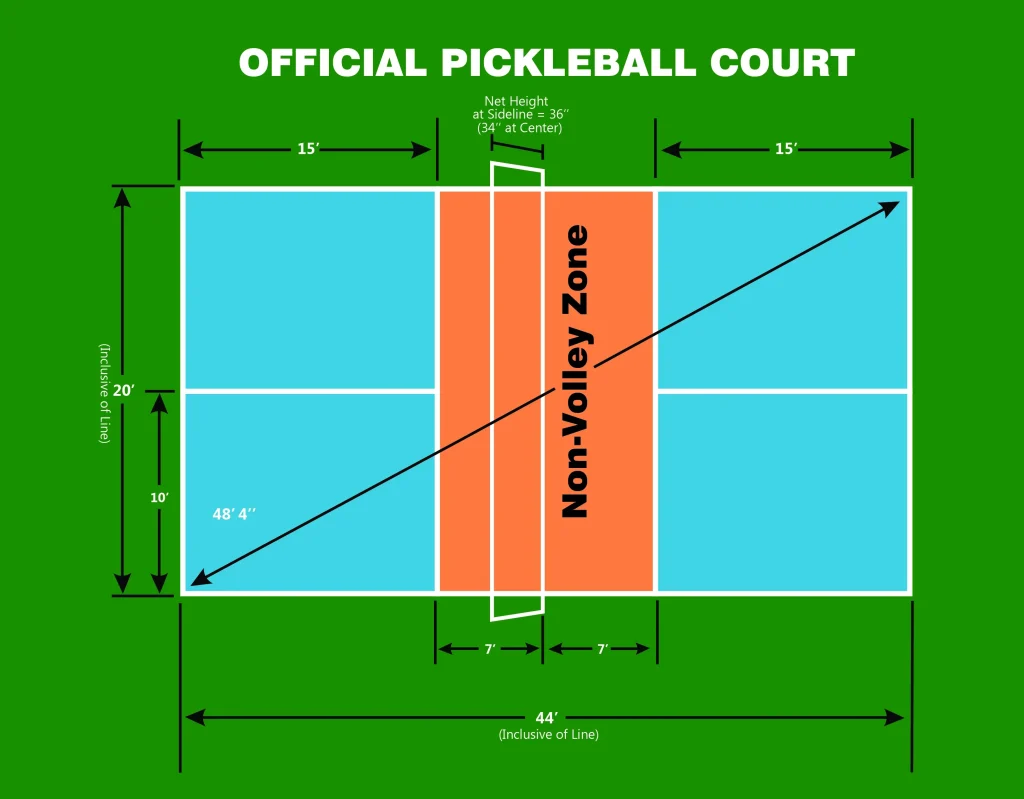
Material needed in construction of Pickleball Court
Yes of course! While building a pickleball court, a guide about types of material is mandatory to comprehend.
The material selection is merely dependent on expense and quality.
When you invest a little bit high at once, you wouldn’t need further investment at short intervals.
There are three forms of material:
- Concrete
- Asphalt
- Plastic tiles
Concrete: Yes, it is expensive but more reliable than asphalt. Because of its durability, concrete is the most demanding material around the World.
Asphalt: Asphalt is cheaper and does not have a long-life span. You have to spend money at regular intervals.
Plastic tiles: Plastic tiles are probably the best choice to build a pickleball court. It costs you a little high, but you don’t need further investments.
Fencing and Lighting of the pickleball court
Fencing is mandatory for courts constructed for tournament purposes, as it provides security from spectators.
To prevent the ball from going out, and avoid confusion barricading the playing area is an essential part of building a court, especially a multi-court.
There are many types of fencing material, but wire works best for fencing. The wire is a reliable and affordable means of fencing.
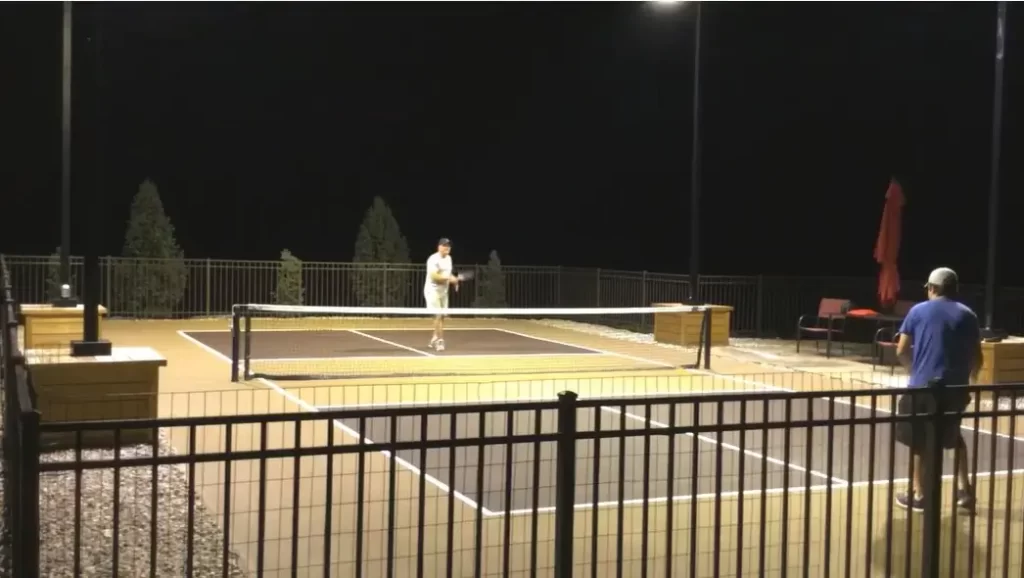
Keeping in mind the dimensions of the court, barricade the playing area by fencing it.
Pickleball Court Installation: Step by Step guide
Here, after considering all the basic requirements, I point out step by step guide for building an entirely new court:
First, you need to know details about lines before building a pickleball court.
Baseline: The lines that run opposite to the net of pickleball on both sides of its court horizontally.
Sideline: The lines that run perpendicular to the pickleball net on both ends of the court.
Non-volley line: These are the lines, which fell at a distance of 7 feet from the net. These lines mark both ends of the net, between baselines and net.
Non-volley zones: These are the areas that fell between non-volley lines and net, stretched over 07 feet at both ends of the net.
Centerlines: These lines are vertically scribbled between the sidelines. From baseline to non-volley line. Its distance is 10 ft. from each sideline.
Service courts: After drawing centerlines, parallel to sidelines, the area between baselines and non-volley lines, is divided into two rooms (of 15 ft x 10 ft each).
These rooms are known as the left and right service courts/areas.
Lines width: The width of each line should be 2 inches and divide the area of lines right at their middle (for that line, which fell in between 2 courts/areas).
You should use white paint spray and paint to draw lines.
- You need a standard area of 60 feet (length) and 30 feet (width).
- After selection of the standard area, you have to mark a cut of 8 feet from outside each baseline.
- The area, which is left behind is 44 feet (in length) now.
- At the end of the sideline, you need to mark a cut of 05 ft outside, the leftover area is 20 feet (in width) now.
- After that, you have to draw baselines of 20 ft from both ends. Later, for the sidelines, you will draw 44 ft lengthy lines from one corner of the baseline to another corner of the baseline vertically.
- At a distance of 15 feet from baseline from both ends, we will draw non-volley zone lines. The area between non-volley lines and the net will be known as the non-volley zone/kitchen.
- In the end, you will draw a vertical line between the baseline and non-volley line, which will be distant from each sideline at 10 feet. This line will divide the area into two parts, known as the left service area and the right service area.
- After drawing the entire lines, you should wait for at least 24 hours to get the lines dry. Later on, install the net, and the court is ready to play pickleball. It depends on your choice to install lights if you want to play at night.
Backyard Pickleball Court
The people interested in playing pickleball must know that the court pickleball can be built in your backyard (to learn more about the size of pickleball courts, read here).
But it is good to use clubs, sports complexes, recreation centers, and gyms as they have sufficient courts.
Moreover, you need not spend extravagantly on the establishment of the court.
Despite being aware of the above-mentioned facts, if you are still interested to build a separate/private court, then you should know that there is no size difference between indoor and outdoor courts.
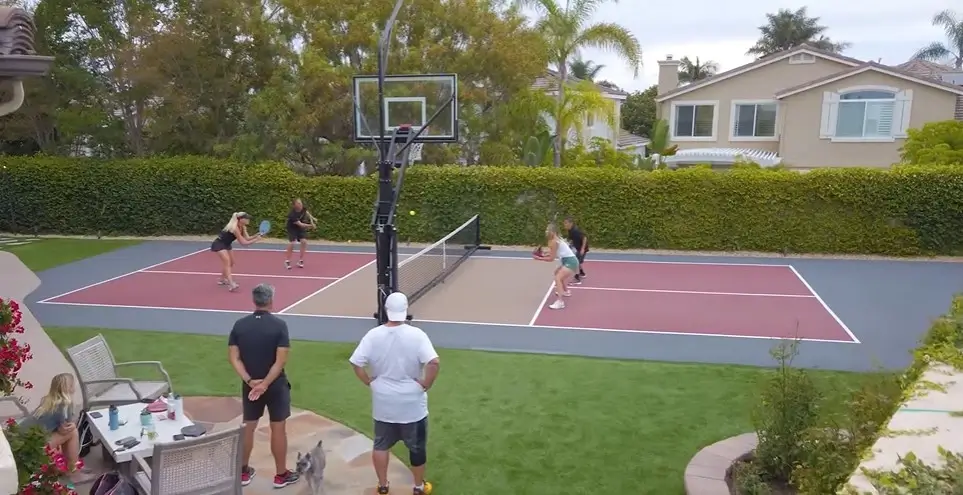
Backyard Pickleball Court Dimension
Now you might be thinking that what should be the dimensions of backyard pickleball court?
The standard pickleball playing area requires to construct a complete backyard court is 60 ft (length) and 30 ft (width).
After selection of the area, the dimension of the court area is 44 feet (length) and 20 feet (width).
For the further partition of the area, you can get help from the details, minutely discussed above.
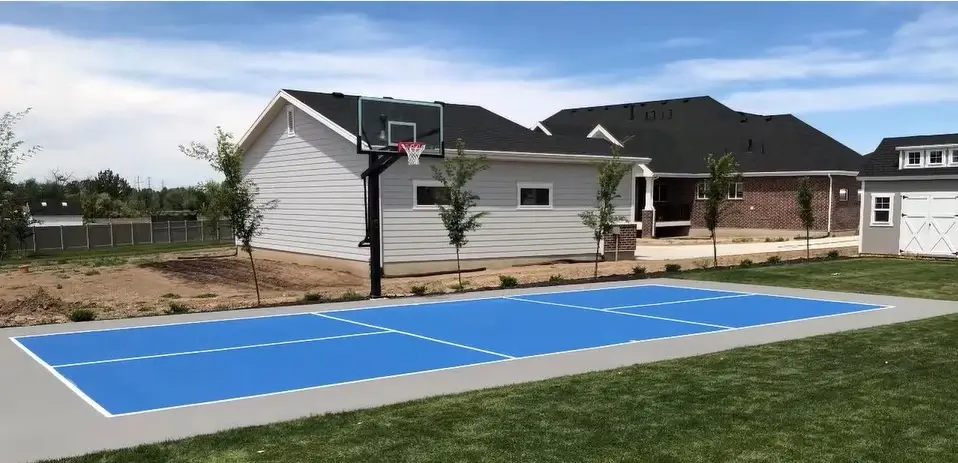
Court layout For Pickleball and Tennis
A pickleball court is different from tennis. It is small and almost one-fourth of a tennis court. The Court designed for pickleball is 20 feet wide and 44 feet long.
The size of the badminton court is about the same.
We can also play pickleball on a tennis court by adding the lines and changing the net height.
This is a unique fact, you can convert a tennis court to a pickleball court or you can use a tennis court for both pickleball and tennis which is a multipurpose change-over.
Multipurpose conversion is a good decision as converting the tennis court permanently means we are losing a complete asset.
Changing the net height by using some tools and lining the surface by using temporary means is multifunction alternation.
When you do not need a tennis court anymore, you may convert it permanently, and there you will have four courts from one tennis court.
The playing area for a pickleball court should be more than the mentioned dimensions of the court to make play easy and less confusing
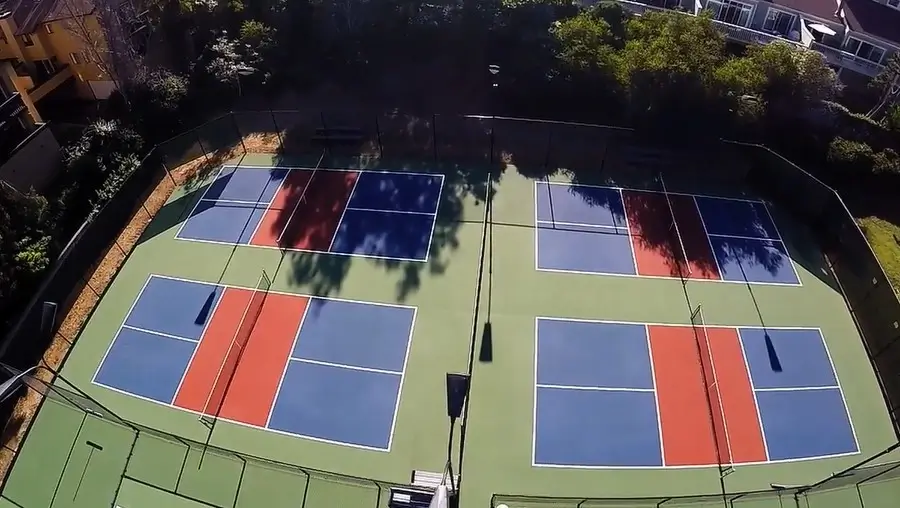
Final Thoughts On How To Build a Pickleball Court
As pickleball has made its mark around the world, at the same time, its demand is also increased.
Constructing a court in schools, clubs, or gym requires professional’s guidance and instruction.
Otherwise, when you are going to build a court in your backyard or convert a tennis court for multipurpose use, you may do it by yourself.
Knowing the basic things like dimensions, orientation, and quality of materials used in it that are affordable and reliable is mandatory.

I am Michael Wanner, an experienced and educated expert in the field of pickleball. I hold a degree in Sports Science from Cleveland State University, Ohio, USA. My expertise lies in the technical aspects of pickleball and how to play it effectively. I have spent many years playing and coaching pickleball and have a wealth of knowledge to share with my readers. I am a valuable resource for anyone looking to improve their pickleball skills and strategies.
Mr. Wanner:
RE: Building a pickleball court-Rookies!?
Firstly your recommendations on size, tournie or private are 100 percent and that’s where it ends.
Concrete: I’ve seen many pickleball courts in US South West constructed in concrete, typically 6″ thickness. So in Arizona in April overnight temps 5C, by noon 20-25C. Expansion-Contraction. Unlike industrial concrete floors or pads, in pickleball you can not have expansion joints. ERGO most new/old concrete courts are cracked! Secondly most concrete courts utilize a very abrasive acrylic finish. You don’t want to fall! Third, concrete does little to poor inelastic impact properties. At 68 years old, I will not play on concrete based courts. Much too hard on knee joints.
Asphalt: You’re somewhat correct in your assessment, but marginal at best.
3″ slurry asphalt i.e. more sand, tars provides an excellent base surface that allows for expansion and contraction regardless of where located. It also offers point elastic properties which is excellent for body joint impact and management. I can play all day long on asphalt courts without pain.
Low Life Cycle maintenance on asphalt courts. Choose a high quality acrylic finish with rubberised compounds. Not only does it improve the performance of the court but ensures years of maintenance free expenditure.
FINALLY: All the above is a mute point if the proper substructure to the court is not properly designed. Substructure design will be predicated on soil type and composition.
Two more points to consider before you put a pickleball court on your property. Does Municipal Zoning permit such a development? CHECK your By-Laws.
A minimum of 2% slope for water run off is a must.
RKO Developments Inc.
Robert W. Code B. Comm.,
President